Affiliate disclosure: This post may contain affiliate links. Please see our Privacy Policy.
Finding morel mushrooms for the first time is a dream come true for most beginning foragers. Even decades later, seasoned foragers still enjoy the thrill of identifying morels every spring.
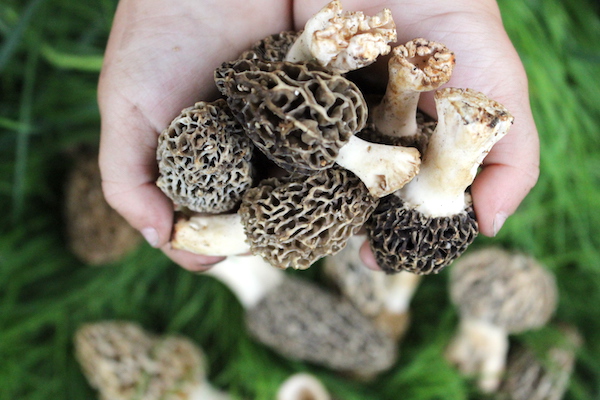
Table of Contents
- Natural History Of Morels
- When Is Morel Mushroom Season?
- Where to Find Morel Mushrooms
- Identifying Morel Mushrooms
- Characteristics of Morel Mushrooms
- Morel Look-Alikes
- Wrinkled Thimble Cap (Verpa Bohemica)
- Gyromitra spp.
- Thimble Morel or Bell Morel (Verpa conica)
- Half-free morel (Morchella semilibera, M. punctipes, M. populiphila )
- How to Collect Morel Mushrooms
- How to Preserve Morel Mushrooms
- How to Cook Morel Mushrooms
- Morel Mushroom Recipes
- Wild Foraging Mushrooms
Morel mushrooms are one of the best-tasting things you can find during the spring foraging season. While most of the harvest this time of year is bitter greens, much needed by your system after a long winter, morels are one last bite of comfort food.
They taste best sauteed in butter and finished with a splash of cream, and are a great way to get in one last indulgence before the deluge of spring salads.
Though they have a number of toxic look-alikes, identifying morel mushrooms is simple enough with good attention to detail. A quick tutorial and my 4-year-old foraging assistant is off scouring the ground for treasure…
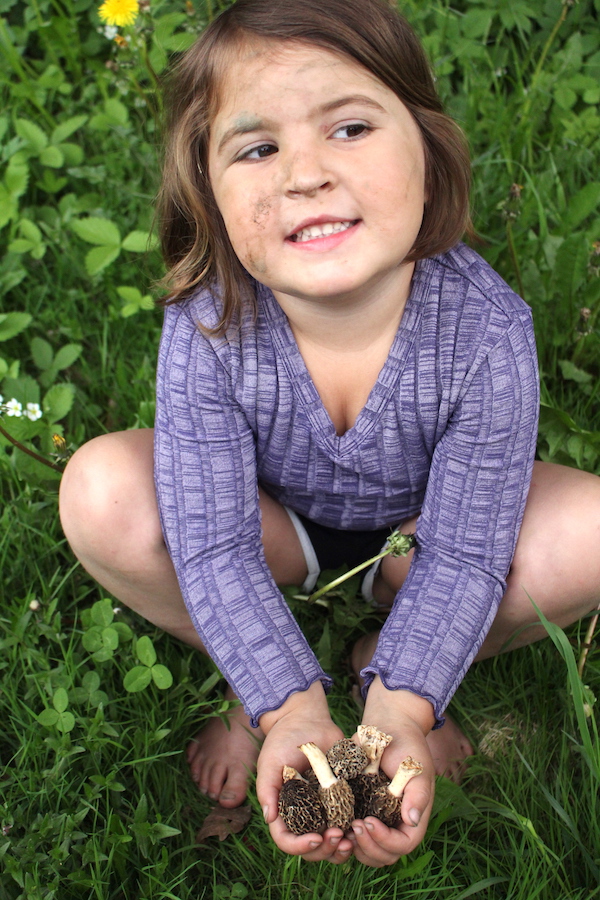
Natural History Of Morels
Morels are enigmatic mushrooms that have baffled foragers and scientists for centuries. This is likely because despite most morels looking very similar to the untrained eye, they are very diverse organisms in both ecology and phylogeny.
For example, their taxonomy remains complicated, and dozens of invalid names are used worldwide. Identifying morels to species requires observing fine patterns and details in the mushroom, and in some cases can’t be done without microscopy or DNA sampling. They are also considered polymorphic, meaning a single individual can produce mushrooms with diverse morphological features.
Ecologically speaking, some species are decomposers who feed on organic debris, while others are known to form symbiotic relationships with trees. Certain species pop up naturally in the spring, while others fruit in large numbers after disturbances like wildfire, logging, or flood. To properly understand this group you can’t bunch them together as though they behave the same.
When Is Morel Mushroom Season?
The first trick to finding morel mushrooms is to look at the right time. That can be tricky, as morel season varies by region, and can change a bit from year to year depending on the weather.
Why?
Morels fruit in response to soil temperature.
Morel Season in Eastern North America
Most varieties begin fruiting when the soil temperature (4 inches below ground) reaches 55 degrees F (12-13 C) and stop fruiting when soil temps warm to around 62 degrees F (16-17 C).
I took the soil temperature next to this morel mushroom in early June and it read 59 F. Toward the end of the season, but this specimen is already past prime and likely surfaced during cooler temps a few days ago.
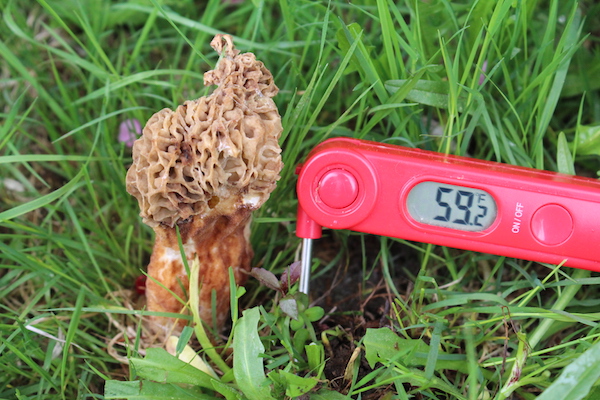
These particular soil temperatures generally correspond to when daytime temperatures are in the 60’s and the nightly lows are in the 40’s.
In Vermont, a good time to find them is in late May. In more Southern latitudes, they can be found as early as March, and in the far north, they’ve been recorded as late as July.
Black morels come up first, around the time of the first trout lilies, ramps, and trillium.
Three weeks later, you’ll begin seeing yellow morels. They arrive alongside the first dandelions and wild strawberry flowers. In warmer areas, that can be late March into April, but here in Vermont, yellow morels don’t pop until late May and early June.
These Yellow Morels popped up in late May in Central Vermont, under an old apple tree.
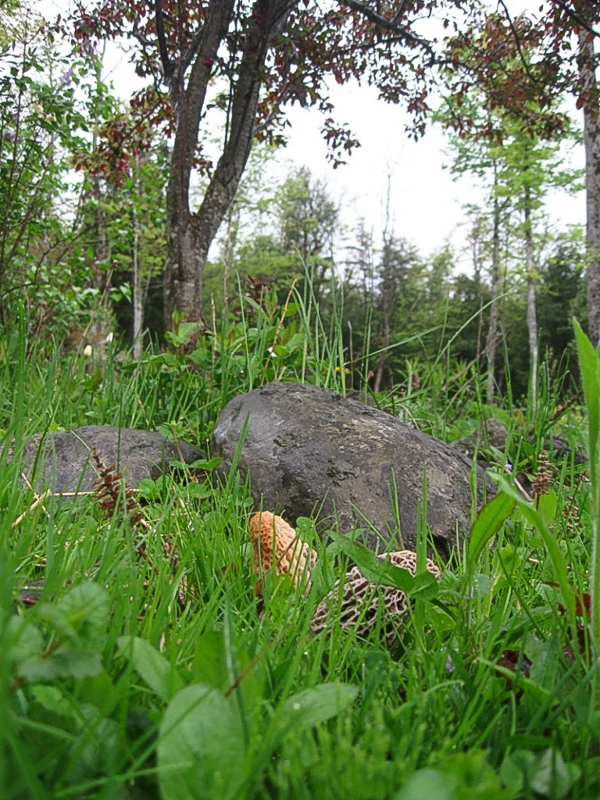
Morel Season In Western North America
In the western hemisphere, Morels have a rather long season that can go from March to July in distinct areas. The first morels of the season occur in lower elevations and tend to be associated with landscaping and also in old apple orchards. Following this, the real season begins in the mountains for burn morels and natural morels. These are by far the most abundant, although they often occur in remote areas.
Generally speaking, Morels in montane parts of western North America start in low elevations and move their way up as the snowline retreats. They tend to fruit anywhere from 2 to 6 weeks after the snow melts. It can start as early as April in low elevations and go until July at high altitudes. Because of this, low-elevation areas and southern-facing slopes tend to produce first, whereas the late-season morels are in high elevation or on northern-facing slopes. Since their fruiting is very dependent on the season, it is a good idea to go as soon as you start hearing of reports in your area. Since elevation can be a key factor when looking for morels it is recommended to keep track of your elevation using your phone or GPS.
Where to Find Morel Mushrooms
Once you know when to look, the next problem is where…
Where can you find Morel Mushrooms? Everywhere and nowhere! They’re liable to grow just about anywhere in the US, but finding where a spore has landed and found good conditions for growth is a bit of a scavenger hunt. Luckily, morels are not as picky as you might think about habitat.
Due to their complexity, we won’t go too deep into the taxonomic details of morels. Yet, the two most common ways morels are grouped are as either Yellow Morels and Black Morels. Yellow morels are yellow/tan in color, while Black morels are brown/black.
Black Morels (Section distantes)
Black Morels occur with conifers in the montane parts of western North America and also with Tulips and Ash in eastern North America. In western North America, many species occur in large quantities after wildfires,especially within 1-2 years of a burn, while others fruit in undisturbed forests. They don’t need fire to pop up, but something about a burn makes them more likely to appear.
They also prefer (but don’t need) alkaline soils, which may have something to do with their preference for recent burn sites. Hardwood ash increases the alkalinity of soils, thus their affinity for burn sites.
In the West, post-wildfire morels are often referred to as “Burn Morels” while those that grow in undisturbed conditions are called “Naturals”. Some Black Morels will grow in gardens and landscaping, often in association with wood mulch. These are referred to as “Landscape Morels”, and are often considered a distinct taxonomic group called section Rufobrunnea.
Though they don’t grow on trees, they are often found near ash, cottonwood, sycamore, as well as in disturbed areas near roadsides, campgrounds, logged areas or recently flooded low-lying areas.
The most common black morels in North America include M. punctipes, M. snyderi, M. angusticeps, M. importuna, M. tridentina, M. brunnea, M. norvegiensis, M. tomentosa, M. populiphila, M. exuberans, but there are many more.
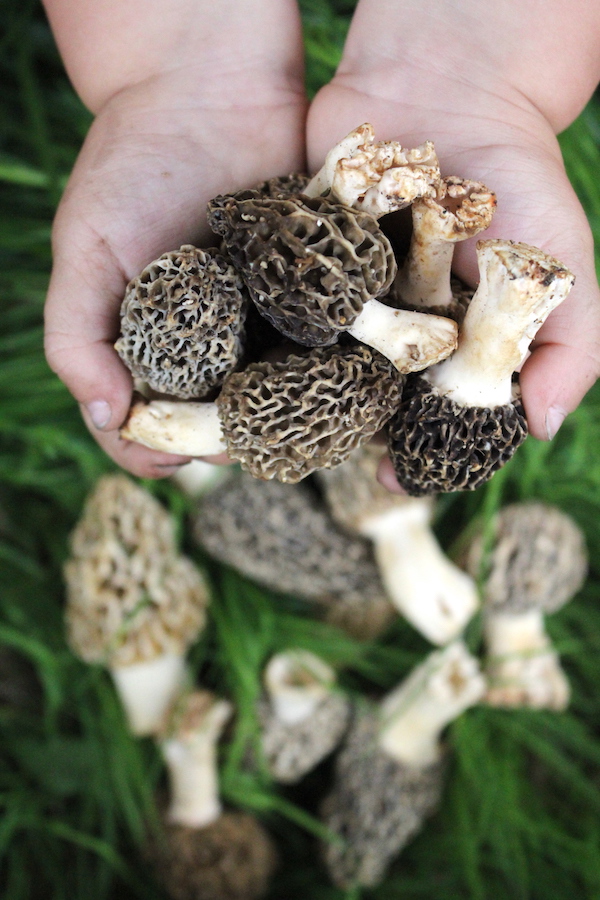
Yellow Morels (Section Morchella)
Yellow Morels are those closely related to the European Morchella esculenta.
In eastern North America, they are common beneath Elm trees. In particular, they like large and old Elms that are sick or dying. This is particularly true of Morchella esculentiodies. They’re also found near ash, poplar, elm and apple trees. Old apple orchards may have been treated with calcium carbonate (powdered limestone) to increase the pH and make the soils more alkaline.
What’s good for apple trees, also happens to be good for morels, and mimics conditions after a burn.
Be careful harvesting in old apple orchards though. Historically, it was not uncommon to treat them with lead and arsenic as a pesticide. There is the potential for those chemicals to accumulate in the mushroom fruitbodies, so keep that in mind.
There is a great discussion of that issue here.
In Europe, Yellow Morels are found near Ash trees. In the western United States, one of the most common Yellow Morels is Morchella americana which occurs on the flood plains of rivers with Cotton Woods. There are other examples, but these are the most important to be aware of.
The most common yellow Morels in North America include M. americana, M. diminutive, M. sceptriformis, M.galilaea, M. “esculenta”, and M. prava.
Regardless of where you’re looking, when you spot one, there are likely others close by. Look near the trees drip line, where conditions are moist but also sunny to warm the soil. They also seem to like woods edges, where trees give way to open fields.
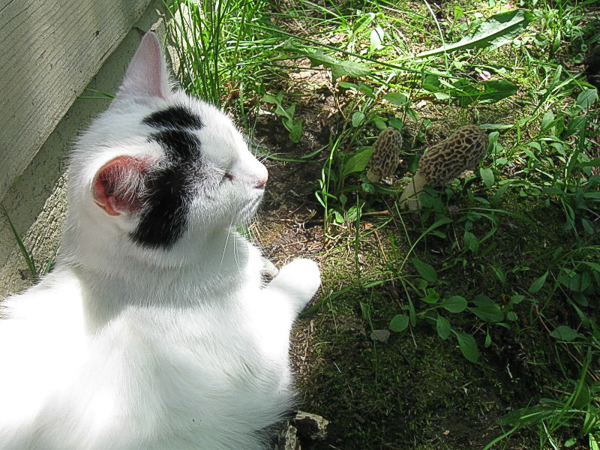
This is a very simplified classification. Realistically, the groups aren’t so clear cut and there are always exceptions when it comes to morels. For example, Morchella tridentata is blond in color but is taxonomically considered a Black Morel.
Burn Morels
Morels can grow anywhere, but if you want to find a lot of them, you often need to go into very remote places. This is particularly true for burn morels and natural morels in western North America. These require long trips into the mountains and up forest roads. For most people, it often requires at least a full-day trip if not an entire weekend to have a successful hunt.
Unless you have good intel on where they are being found in your region, it can often take a lot of scouting and failed forays before you get anything decent in your basket. Even if you come up empty-handed (which you might), don’t be discouraged!
Finding Burn Morels
Burn Morels occur all across the world and are typically found in the years following a forest fire. They are known to occur throughout North America, Europe, South America, and Asia. This being said, Burn Morels are particularly abundant in montane parts of western North America. This includes California and the Pacific Northwest. Their abundance in these regions makes them some of the most important hotspots for morel production around the globe.
In western North America, Burn Morels generally grow in higher elevations above 4,000 ft. They are particularly fond of true Fir (Abies) forests, although they can occur with Douglas Fir, Madrone, Oak, Maple, and many other species. This being said, if you want to find burn morels, your best bet is to head up in elevation until you are in an area dominated by true Fir. If possible try to get your hands on a map of the previous years’ burn perimeters and look for fires that happened between 5,000 and 10,000 ft. Your local National Forest Service office may have fire maps available, and they often can give you leads regarding good spots.
Since elevation is so important with morels in western North America, it can help to find roads that head into the high mountains. Once on these roads, keep track of your elevation (you can use your phone’s GPS) and start checking promising spots. If you’re not finding anything keep going up. They’ve been known to grow right at snowline so don’t be discouraged. If you start to find some, consider focusing your search within that particular elevation range.
One of the keys to finding burn morels is understanding that they prefer forests that burn with a light to medium fire intensity. The largest patches occur in areas where there are still trees standing and not where the forest fire had a high mortality rate. If there is still a bit of unburned duff on the floor that is typically a good sign. It is not uncommon to see them growing near burnt-down hardwood species within a coniferous forest.
It is good to note that “Natural Morels” will also grow in unburned Fir forests at the same time of the year as burn morels. Sometimes they can still be quite abundant, but not often on the scale of burn morels.
Identifying Morel Mushrooms
While most people assume “morels” are just one type of mushroom, they’re actually not a single species. In fact, they’re a large genus of mushrooms with similar characteristics, including over 100 distinct species.
Much of the species differentiation is merely academic, and identifying the exact morel species is less important than you might think (and may be impossible lacking genetic testing equipment).
Regardless of the morel species, they’re all tasty, and they share characteristics that allow them to be identified as a genus.
While new species are being identified all the time (30 new species were identified as new to science in 2014 alone), generally when talking about morels there are a few key species to note.
For Black Morels, common species include: Morchella angusticeps, Morchella conica, and Morchella elata.
Common Yellow Morels include Morchella deliciosa, and Morchella esculenta.
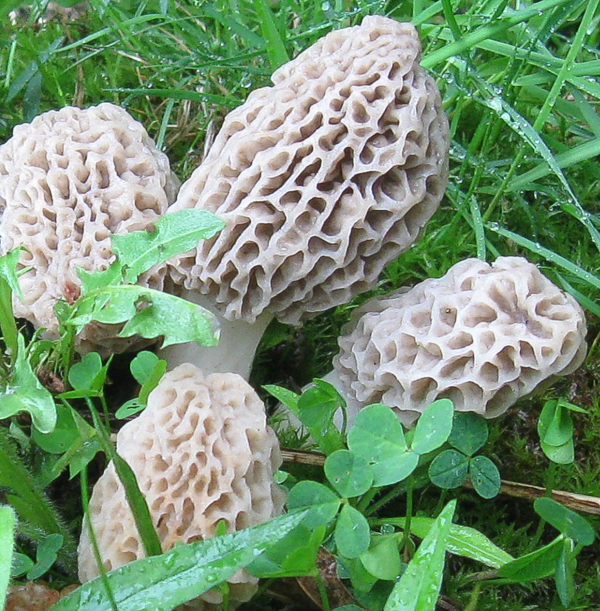
Characteristics of Morel Mushrooms
Morel mushrooms all share a number of characteristics, which will allow you to separate them from toxic look-alikes.
If you think you’ve found a morel, the first thing to do is take a look at how the cap attaches to the stem. Does the stem slip under the cap like the handle of an umbrella? No good!
True Morels have a seamless cap attachment and the honeycombed cap attaches directly to the stalk.
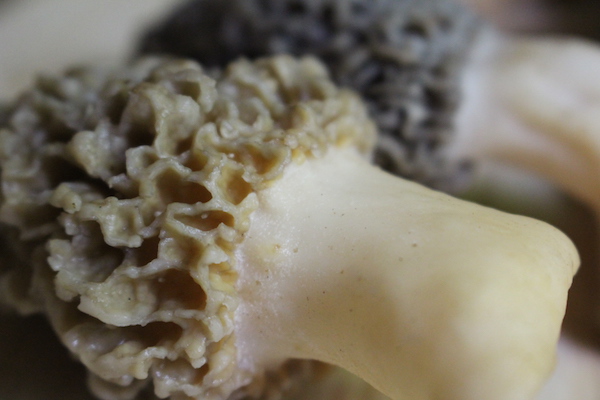
Once you’ve noted the cap attachment and verified that the cap moves directly into the stalk, the next step is to examine the inside.
Cut the mushroom in half from top to bottom. Morels are always hollow from the bottom of the stem to the tip of the cap, while many of the look-alikes are not.
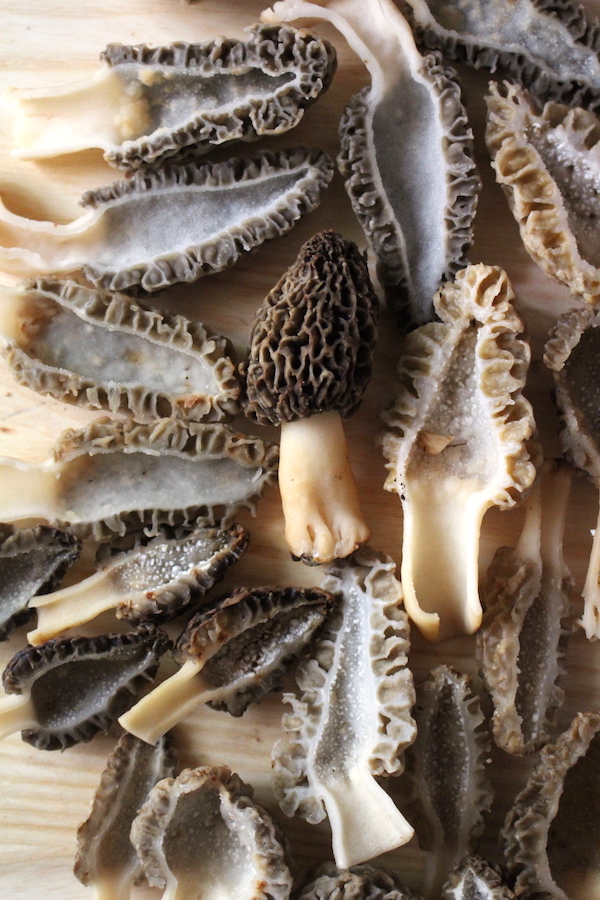
Those two things, the cap attachment and the fact that they’re hollow, should quickly eliminate all the potential toxic look-alikes.
That said, there are a number of other characteristics that can help to positively identify morel mushrooms…
The main characteristics of morel mushrooms are:
- Honey-comb like ridges and pits on the cap
- Stem attachment at the base of the cap, and is completely attached along the bottom ridge. (Not under the cap like a skirt or umbrella)
- Morels are always hollow from the bottom of the stem to the tip of the cap
- Usually longer than they are wide (as compared to false morels which are often but not always wider than long)
- Size varies widely, but caps are 1-4 inches in length, and 1-2.5 inches wide, and stalks are usually 0.5 to 4 inches long and 0.5 to 1.5 inches in diameter.
- Colors vary but include yellow, tan, grey, grey-black, olive-ish. They rarely venture into the red spectrum, which is more common for false morels.
Morel Look-Alikes
Morels mushrooms have a number of poisonous look-alikes. To my eye, they’re not even close.
Once you’ve seen a true morel, I can’t imagine you’d confuse it with a toxic Gyromitra. Nonetheless, every spring on mushroom identification forums I see pictures of Gyromitra posted, with the forager hoping and wishing they’d found a morel.
Look closely, and remember the key characteristics.
They should be hollow, with a stem attachment at the base of the cap. Remembering those two things will help keep you out of trouble.
Nonetheless, there are 4 mushrooms that are considered morel look-alikes, and 3 of them are toxic. Verpa Bohemica, Gyromitra, and Verpa conica are all potentially toxic, though easily distinguished from true morels.
Half-free morels are not toxic, but they’re not particularly tasty. They’re also easy to identify.
Wrinkled Thimble Cap (Verpa Bohemica)
Verpa bohemica looks to my eye the most like a true morel from the outside. It does have something that vaguely looks like a honey-combed cap, but when you look closely, it looks less like a honey-comb with sharp ridges and more like a wrinkled sheet or the lobes of a brain.

The distinction becomes completely clear when the mushroom is cut in half lengthwise.
Verpa bohemica has a cap to stem attachment well under the cap like a skirt and does not have a hollow stem. The stem is filled with a cotton-like fluff that you won’t find in a true morel.
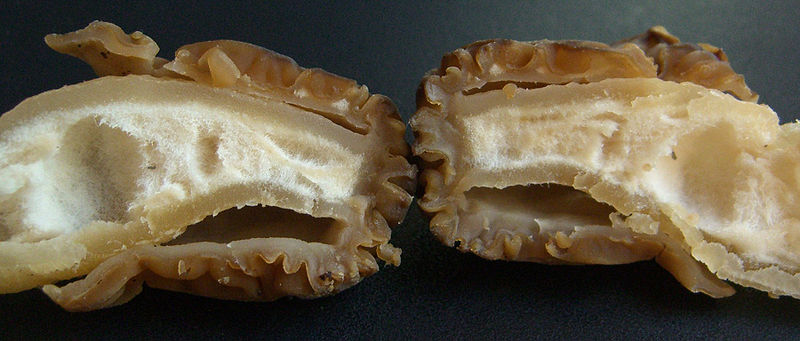
Verpa bohemica may or may not be toxic. Its toxicity is still up for debate by science, and only some people may be susceptible to the low levels of toxin. It is eaten by many people, but it’s suggested that consumers should limit themselves to small amounts at any given sitting.
The potential toxin is Gyromitrin, which may or may not be produced by the mushroom in small amounts. When ingested in small quantities, this toxin can produce nausea, stomach cramps, and diarrhea, and in large quantities can produce convulsions, jaundice, coma or death.
Regardless of whether or not it’s toxic, its flavor, unlike that of a morel mushroom is described as “unremarkable.”
Verpa bohemica is easily distinguished from the true morel by its ridges, stem attachment and lack of a hollow stem.
Gyromitra spp.
Gyromitra is a genus of 18 mushrooms that are not closely related to morels, and though they do have ridged caps, there are many obvious differences. The root words of Gyromitra translate to “Convoluted Turban” which is a reasonably accurate description of how it looks.
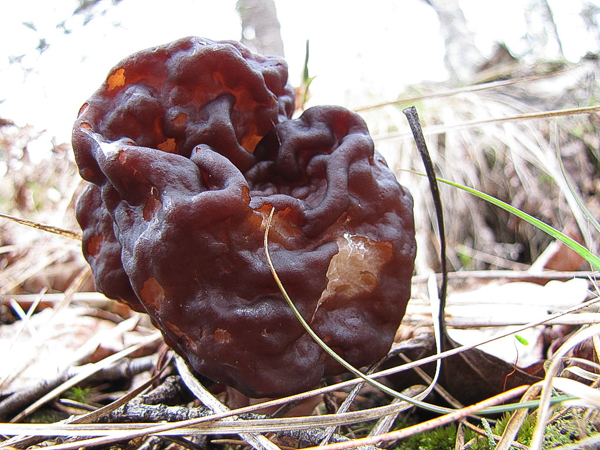
The mushroom is often much wider than it is tall, and the ridges look like folds of cloth rather than a honeycomb.
Even if you somehow manage to spot a Gyromitra and optimistically hope it’s a morel, the true identity will become clear once you cut it in half lengthwise.
It is also not hollow, which is the dead giveaway. Their cap is generally much redder than a morel as well.
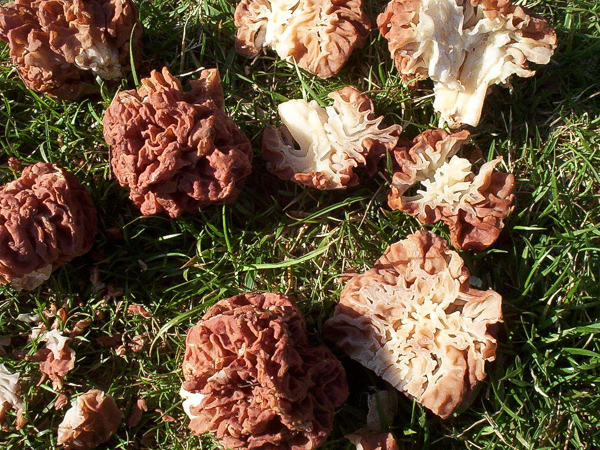
Though many species of Gyromitra mushrooms are highly toxic due to the presence of Gyromitrin, they’re often eaten when fully cooked in Scandinavian Countries, or fully dried in Spain.
It appears though, that the toxin is not fully removed in these cases, and those that are eating them are just less susceptible to the toxin. We spotted some of them while a Sweedish friend was visiting, and he remembered eating them growing up in Sweeden in the ’70s.
Still, though some cultures do consider them edible, don’t risk it!
A study in the 1970’s estimated that nearly 1/4 of all mushroom-related toxicity cases were due to Gyromitra species, so it’s best left alone.
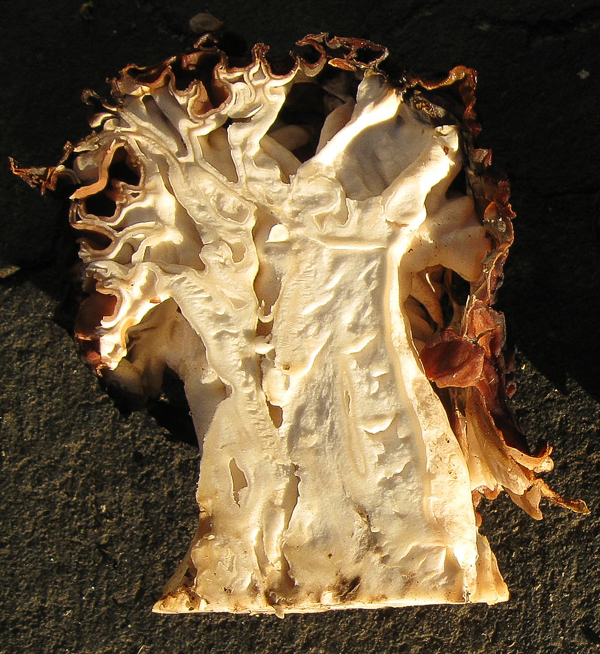
It’s easy to tell the difference between this genus and morels, so eaten by traditional cultures or not, you can make your own choice to stay clear of them.
Though I wouldn’t recommend eating them, here’s a discussion on how to cook gyromitra mushrooms.
Thimble Morel or Bell Morel (Verpa conica)
Very small barely visible ridges and a small cap are your first clues that Verpa conica is not a true morel. The main difference is the skirt or umbrella-like cap attachment in Verpa conica, which makes it easy to distinguish from a true morel.
Though the stem is hollow, the cap does not flow seamlessly into the stem, and the stem slips under the cap like legs in a skirt.
It is questionably edible, with some reports of gastrointestinal discomfort.
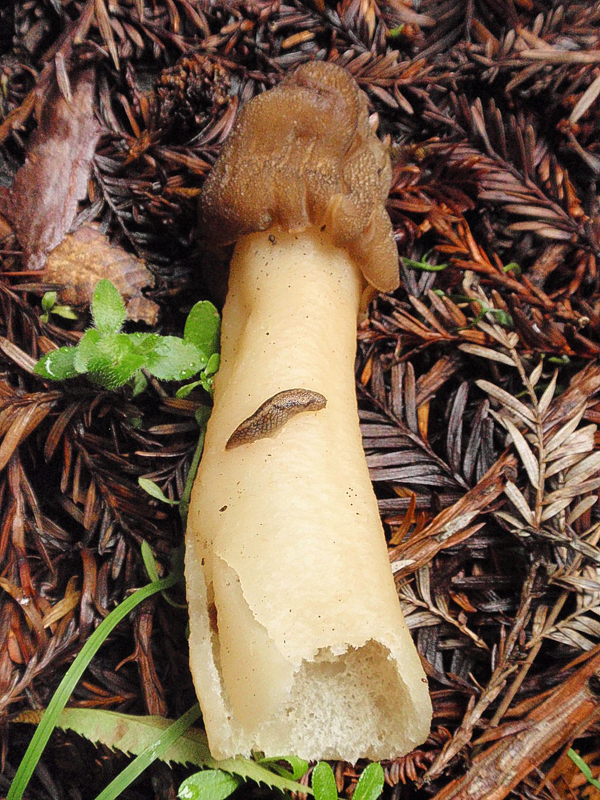
Half-free morel (Morchella semilibera, M. punctipes, M. populiphila )
Half-free Morels are very closely related to black morels and are considered edible.
They are in fact, part of the “morel” genus. However, they’re not particularly tasty and very fragile to harvest. If you find one, you do technically have a “morel” but I wouldn’t show it off to your fungus-loving friends. They’re considered an inferior species, and not one to write home about.
The main distinguishing feature is that it is “half-free” or that the cap does not seamlessly flow into the stem, but tucks under like legs under a skirt. It also tends to have a very long stem and small-cap.
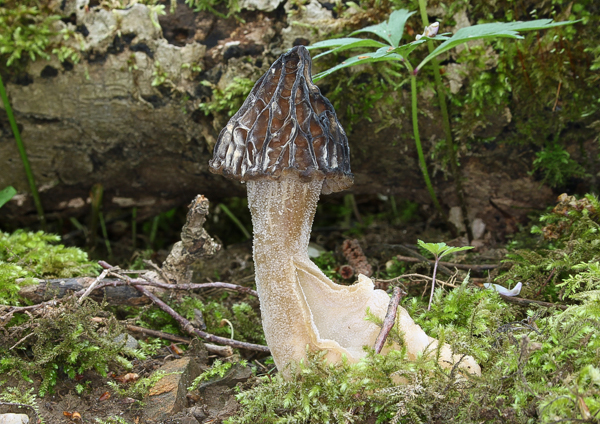
How to Collect Morel Mushrooms
When out collecting mushrooms, always use a mesh bag.
Why?
Because along with the mushrooms, you are carrying away the spores. Millions of them.
Mushroom spores are free, and instead of taking them with you, they should sprinkle around the woods as you harvest. Think of it as mushroom community service.
Something like a mesh sporting goods sack works well, but I prefer this mesh shoulder bag. It’s easy to carry, and I use it at the market when I’m not collecting mushrooms.
How to Preserve Morel Mushrooms
Morels are best preserved dried. They dehydrate easily in a dehydrator, or on a mesh screen with a fan running near them. They are quite wet and spongy, so be careful to keep adequate ventilation to prevent mold.
It takes nearly a pound of fresh morels to make 1 ounce of dried, which is why they can retail for $16-20 per ounce.
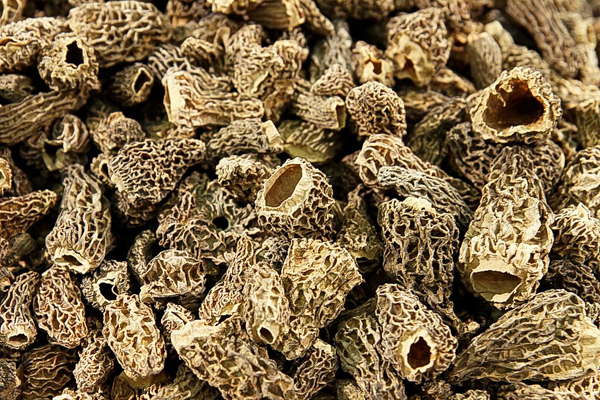
How to Cook Morel Mushrooms
Morels are cooked just like you would most mushrooms…sauteed with a lot of butter and oil to rich deliciousness. They’re described as “the king of mushrooms” for their earthy, nutty and subtly beefy flavor.
I find them best when used to accentuate other early spring tastes like asparagus, wild leeks, and fresh spring herbs. Sauteed in butter and finished with a splash of cream, true morels are to die for!
I tend to add more than a “splash” of cream, and my favorite way to prepare them is in a simple morel cream sauce over pasta.
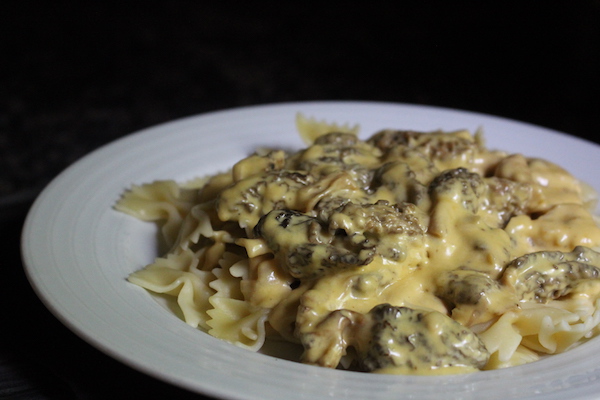
Morel Mushroom Recipes
Looking for specific recipes to prepare your harvest? Here are a few options for you:
Serious Eats: How to Clean Cook and Prepare Morel Mushrooms
Midwest Living: Sauteed Morel Mushrooms
Mushroom Appreciation: Cooking Morel Mushrooms
Michael Ruhlman: How to Cook Morels
Wild Foraging Mushrooms
Looking for other wild mushroom foraging resources? Here are a few other wild mushrooms to try:
- Reishi mushrooms
- Chaga Mushrooms
- Shaggy Mane Mushrooms
- Chanterelle Mushrooms
- Puffball Mushrooms
- Witches Butter Mushrooms
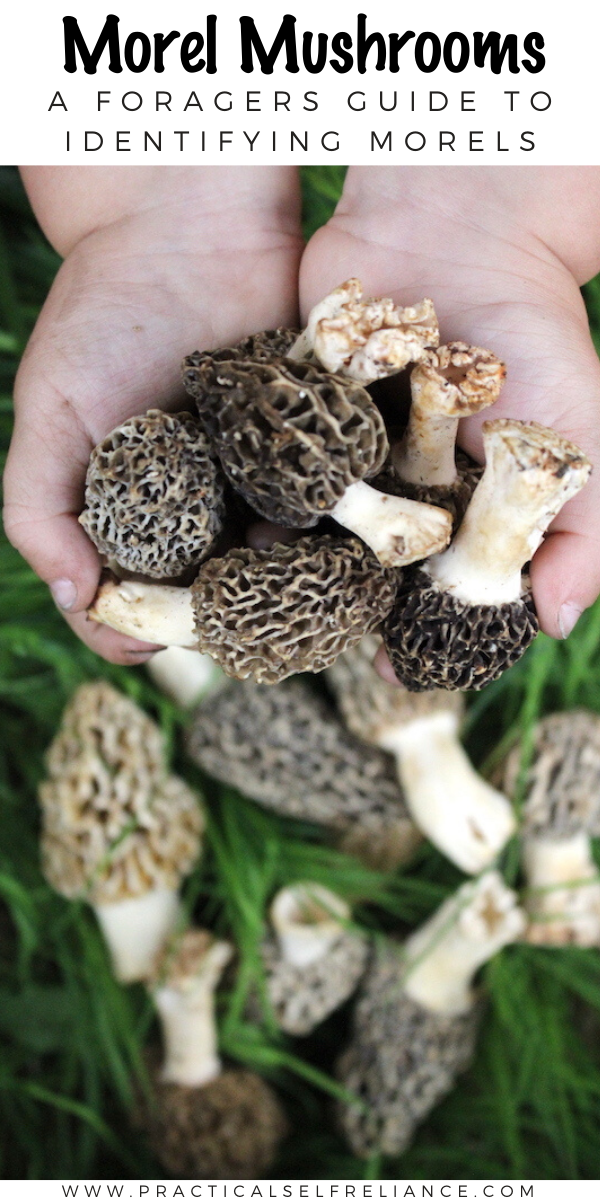

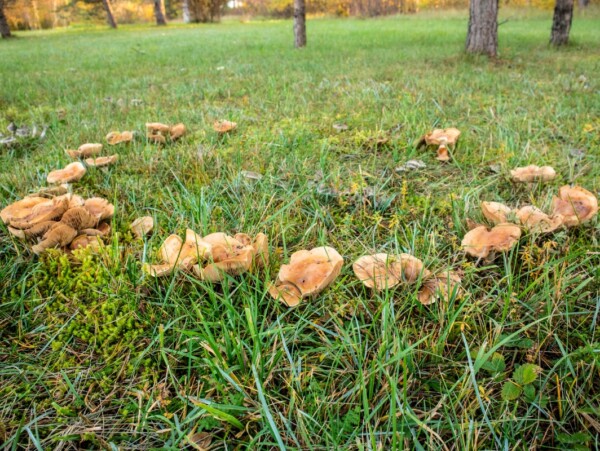
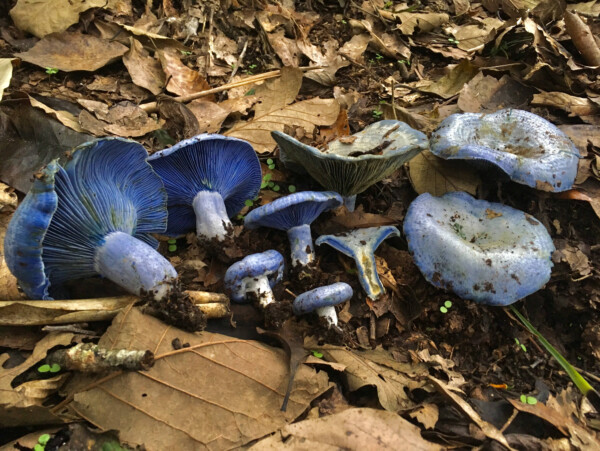
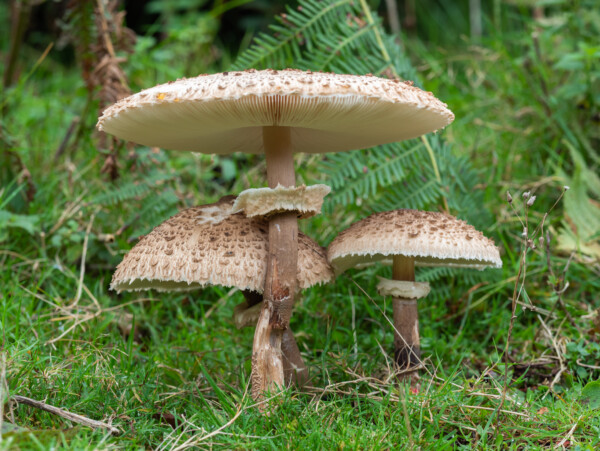
There is a difference between snow bank morels and calves brain morels
Snow banks are Meaty and tasty.
They have a much lighter color we find and enjoy them here in washington state
Thank you, for your fantastic website. I just adore any and every fantastic mushroom info I may find. And ever since I started using the things you suggested, I feel a lot better.
Wonderful, so glad I could help!
Thanks for all the practical info. I second the recommendation on Michael Ruhlman’s recipe! I’ve been following his recipes for years and they’ve never disappointed.
I wouldn’t say half-frees aren’t tasty. They just have more of a mild taste compared to yellows.
Thank you so much for all this info on morels!
The Gyromitra (bad) tastes lovely in sauce and stew. We have used them in Sweden for a long time. A super sign of Spring harvest – but – now we have learned what can happen if you are sensitive to its toxin. Very randomly, but one can ruin life by feasting on (or just testing) this delicacy.